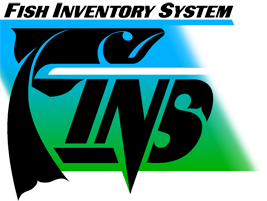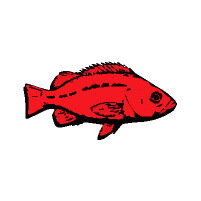During the 1960s, Idaho Power constructed four hatcheries and associated trapping facilities to mitigate for the impact that the construction and operation of the Hells Canyon Dam Complex had on salmon and steelhead. The Hells Canyon Dam Hydroelectric Complex consists of Brownlee, Oxbow, and Hells Canyon hydroelectric projects. These four hatcheries continue to annually produce fish and are now operated and maintained by the Idaho Department of Fish and Game with funding provided by Idaho Power.
The 1980 Hells Canyon Settlement Agreement guides Idaho Power investments in hatcheries. This agreement is the result of negotiations that constituted full and complete mitigation for all abundance losses of salmon and steelhead related to the Hells Canyon Complex under its current Federal Energy Regulatory Commission (FERC, previously Federal Power Commission) license.
Idaho Power’s Annual Mitigation Goals
Overarching Annual Goals
Spring Chinook | 3 million smolts |
Summer Chinook | 1 million smolts |
Fall Chinook | 1 million smolts |
Steelhead | 400,000 pounds |
Data in FINS
Hatcheries implementing the Hells Canyon Settlement Agreement are at different stages of entering their data into FINS. The following table provides an overview of modules that contain data.
| FINS Module | ||||||
| Hatchery | Trapping | Holding | Spawning | Incubation | Rearing | Release |
| Niagara Springs Fish Hatchery | N/A | N/A | N/A | |||
| Oxbow Fish Hatchery | N/A | N/A | ||||
| Pahsimeroi Fish Hatchery | ||||||
| Rapid River Fish Hatchery | ||||||
N/A: module is not applicable for the hatchery.
(table reviewed May 2023
Facilities
Fish Production facilities funded by Idaho Power are described below.
The map displays the 4 facilities (red dot) that Idaho Power uses to mitigate for the impacts of the Hells Canyon Dam Complex.
With your mouse you can click and move the map, zoom in/out, and click on the icons to view the full name of the hatchery and satellite facility.
To meet its’ mitigation obligation Idaho Power contracts with the state of Oregon to raise 1 million fall Chinook salmon annually.
To view location on a map and learn more about the Irrigon Hatchery is provided under the USFWS LSRCP webpage.
![]()
Niagara Springs Fish Hatchery is located in southern Idaho’s Hagerman Valley. Idaho Power built the hatchery in 1966 to serve as a rearing facility for steelhead. With a capacity to raise nearly two million steelhead smolts annually, it is one of America’s largest privately-owned steelhead rearing facilities.
Named after the spring that feeds it, the hatchery’s water is clean, clear and, most importantly, warmer than that in which naturally spawned steelhead grow up. This ideal environment allows the fish to achieve the equivalent of two years growth in just one year’s time.
Eggs arrive here each May from adult steelhead spawned by crews at Idaho Power hatcheries in the Snake and Salmon river basins. In March of the following year, crews begin hauling the year-old fish back to the Snake, Little Salmon, and Pahsimeroi rivers, where they will begin a journey of more than 500 miles to the Pacific Ocean. The spring fish haul takes about six weeks.
Niagara Springs Hatchery has proven to be a tremendous asset in the rearing of steelhead. In the wild, less than 5% of eggs hatch and become smolts that survive to being the migration to the ocean. At Niagara Springs Hatchery, more than 80% of eggs received from Pahsimeroi and Oxbow hatcheries ultimately become fish that embark on their ocean journey.
- Operator: Idaho Department of Fish and Game
- Fish: Steelhead
- Main facility: https://idfg.idaho.gov/visit/hatchery/niagara-springs
- Satellite facilities: None
![]()
Built in 1961, Oxbow Fish Hatchery was the first hatchery facility constructed by Idaho Power as part of its hatchery mitigation program. It is located downstream from the Oxbow Dam powerhouse at the mouth of Pine Creek, Oxbow Hatchery is a holding and spawning facility for adult steelhead migrating up the Snake River, above its confluence with the Salmon River.
Adult steelhead are collected in a trap at Hells Canyon Dam and held to maturity at Oxbow Hatchery where they are artificially spawned by hatchery staff. More than 1 million eggs are fertilized and go through their first stages of development here. Eventually, the eggs are delivered to Niagara Springs Hatchery to hatch and grow for approximately 11 months before they are ready for release into the Snake River below Hells Canyon Dam.
Idaho Power also traps adult spring Chinook salmon from the Snake River for use as broodstock at Rapid River Hatchery. Fish are trapped at Hells Canyon Dam, temporarily held at Oxbow Hatchery and then transferred to Rapid River Hatchery.
Oxbow Hatchery is owned and financed by Idaho Power and operated and staffed by the Idaho Department of Fish and Game.
- Operator: Idaho Department of Fish and Game
- Fish: Steelhead, and spring Chinook
- Main facility https://idfg.idaho.gov/visit/hatchery/oxbow
- Satellite facilities: None
![]()
Pahsimeroi Fish Hatchery, near Challis, Idaho, was built in 1967 and was the last hatchery built by Idaho Power as part of its salmon and steelhead mitigation program.
The hatchery produces more than 3 million steelhead eggs annually, some of which are provided to other non-Idaho Power programs around the state. Many of the adult steelhead returning from the ocean each year and trapped at Pahsimeroi Hatchery are distributed to Native American tribes, charities and food banks.
Eggs for Idaho Power production are shipped to Niagara Springs Hatchery near Wendell, Idaho, in early May. In April of the following year, fish are hauled in tankers back to the lower hatchery where they are released as smolts into the Pahsimeroi River to begin their 800-mile migration to the Pacific Ocean.
Pahsimeroi Hatchery also traps and spawns enough adult summer Chinook salmon to rear approximately 1 million ocean-bound smolts for release into the Pahsimeroi River each year.
Pahsimeroi Hatchery is owned and financed by Idaho Power, and operated and staffed by the Idaho Department of Fish and Game.
- Operator: Idaho Department of Fish and Game
- Fish: Steelhead and summer Chinook
- Main facility: https://idfg.idaho.gov/visit/hatchery/pahsimeroi
- Satellite facilities: None
![]()
Tucked beside a tributary of the main Salmon River near Riggins, Idaho, Rapid River Fish Hatchery is the largest collecting, spawning and rearing facility of spring Chinook salmon in Idaho.
The hatchery was built in 1964 by Idaho Power as part of their salmon mitigation program. It has been rated one of the most successful hatcheries in the Pacific Northwest.
Rapid River Hatchery produces 3 million spring Chinook salmon smolts (juveniles) annually for release into the Snake, Little Salmon, and Rapid rivers. Juvenile spring Chinook salmon spend nearly two years at the hatchery. They grow to a length of four to six inches and are then released for their 45- to 60-day, 600-mile journey to the ocean. They return to Idaho as adults one to three years later where they contribute significantly to both sport and Native American fisheries.
Rapid River Hatchery is owned and financed by Idaho Power and operated and staffed by the Idaho Department of Fish and Game.
- Operator: Idaho Department of Fish and Game
- Fish: Spring Chinook
- Main facility website: https://idfg.idaho.gov/visit/hatchery/rapid-river
- Satellite facilities: None

